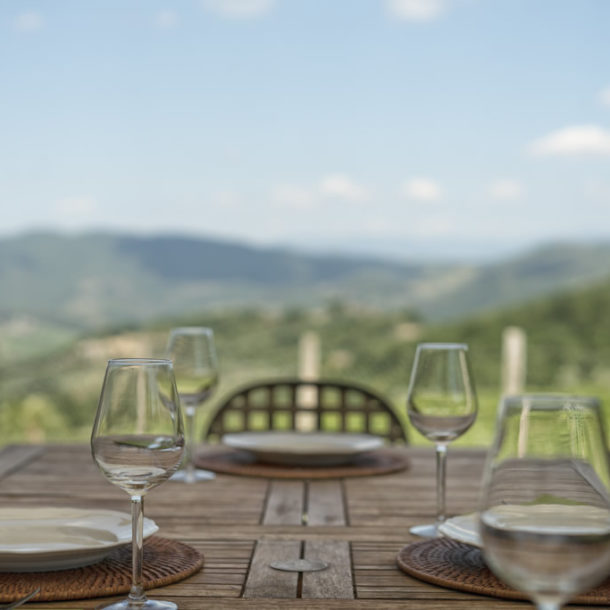

Close

If there is one thing that anyone can notice, from the most seasoned expert down to the beginner, it is that when we are faced with a great wine we understand it by the fact that said wine will give us a definite and real picture of what the terroir from which it comes is all about.
It will tell us its story, in a direct, clear but above all engaging way.
There is a term, which the French invented, that most probably someone will already know: we are talking about the word Terrior.
This terminology is used to explain the relationship that binds a grape variety to the microclimate and mineral characteristics of the soil in which it is grown, but not only that, also to the topography of a vineyard as well as to the style chosen by the producer. This obviously determines the character and uniqueness of the wine itself.
By analyzing the aforementioned relationship we understand how the same type of vine grown in two different places in terms of climate, geological composition, different exposure of the vineyard and with a history from the point of view of different vine-wine technique gives such a different result.
The terroir of a given area turns out to be by far the most important element, perhaps even more important than the grape variety itself.
Chianti Classico casa Nostra:
Alberese, galestro, Chianti macigno, Pietraforte.
These are the main types of soil that characterize this area so strongly suited,
These are the main reasons why in this area even before we understood how to produce a great wine we have always found a very strong aptitude for the cultivation of vineyards.
The main grape variety of these areas, is Sangiovese, which has found its home in these places for centuries.
This grape in each of the different subzones of Chianti Classico finds a different dimension in which to grow. It absorbs from the territory, the climate and the people something peculiar and unique.
So let us start with a brief description of what are the characteristics of these subzones.
Let us begin with San Casciano In val di Pesa: an area straddling two valleys of the Pesa and Greve rivers. Two different areas but which have in common the type of terraced cultivation overlooking the valley. It is a border area with peculiar characteristics that turns out to be different from the rest of Chianti Classico. Thanks to the clayey sands, the wines take on an elegant character, never impetuous but still assertive.
Greve in Chianti is the area with perhaps the greatest variability in terms of morphology, microclimatic conditions and soils. But the wines produced have inescapable elements in common, gentle wines in which iris and violets dominate the scent level.
Panzano in Chianti, although on the level of administrative boundaries it turns out to be within the municipality of Greve in Chianti deserves a discourse of its own. It is an area where the incisive style and practical sense of its winegrowers has in recent years made it possible to establish a bio-district with a large surface area. The terroir is characterized by predominantly marl soils with average altitudes above 400 meters and with prevalent sun exposure. The wines present themselves in a fairly refined, robust manner. They turn out to have excellent structures and deep color.
Proceeding southward we encounter the territory of Radda in Chianti characterized by average altitudes over 400 meters with the eastern part having arenaceous soils and the highest altitudes. Wines of extreme finesse, beautiful acidity, freshness and elegance and that above all can and must take, the right amount of time to mature. These are wines that are not and never will be in a hurry.
These characteristics are shared in part with the wines of Lamole, a small subzone that sees its uniqueness in its dense terracing and average altitude of over 600 meters above sea level. Also of note is the fact that the vineyards in this area are entirely exposed to Solatio.
As for another area that has important altitudes, about 500 meters above sea level is Castellina in Chianti, characterized by soils derived from the marly limestone of the alberese that give fresher wines and by marly clays, in the southern part, that instead give wines that have a greater body and, if we want, also a greater “sweetness.”
Let us now arrive in this our brief journey to Gaiole in Chianti: Morphology of the territory very similar to that of Radda in Chianti but with slightly lower average altitudes, we have innovative and balanced wines, excellent freshness and a stronger tannin.
The extreme southern border of the Chianti Classico territory, almost in the Sienese lands, is Castelnuovo Berardenga. As far as the purely geological scenario is concerned, it is the most varied one.
Borderland, where the Chianti Classico hills give way to a scenery more typical of the Sienese landscapes.
The wines take on a character of fullness and thickness, beautiful sapidity, hints of darker fruit and the floral part turns out to be much less pronounced.
This brief account of what characteristics our Sangiovese takes on in the various subzones makes us realize how crucial the “Terroir discourse” actually is. Chianti Classico wines obviously have so many points of contact with each other but each individual zone, even we could say, each individual winery is a world unto itself that holds surprises and is worth getting lost in.
VILLA LA PETRAIA
Via Giovanni da Verrazzano 32 – 50022 Panzano in Chianti (FI) Italy
Mobile: +39 333 9591881 – +39 333 1744577
- info@villalapetraia.com
FIENILE SANTA TERESA
Via San Martino a Cecione 32/A
– 50022 Panzano in Chianti (FI) Italy
Mobile: +39 333 9591881 – +39 333 1744577
- info@villalapetraia.com
CIN La Petraia: IT048021B4NMFQPYRR – CIN Santa Teresa: IT048021B4VO4SNBBR
© 2021 Elysian & Querencia s.n.c. – P.Iva 06816690488 – Powered by SwollyStudio